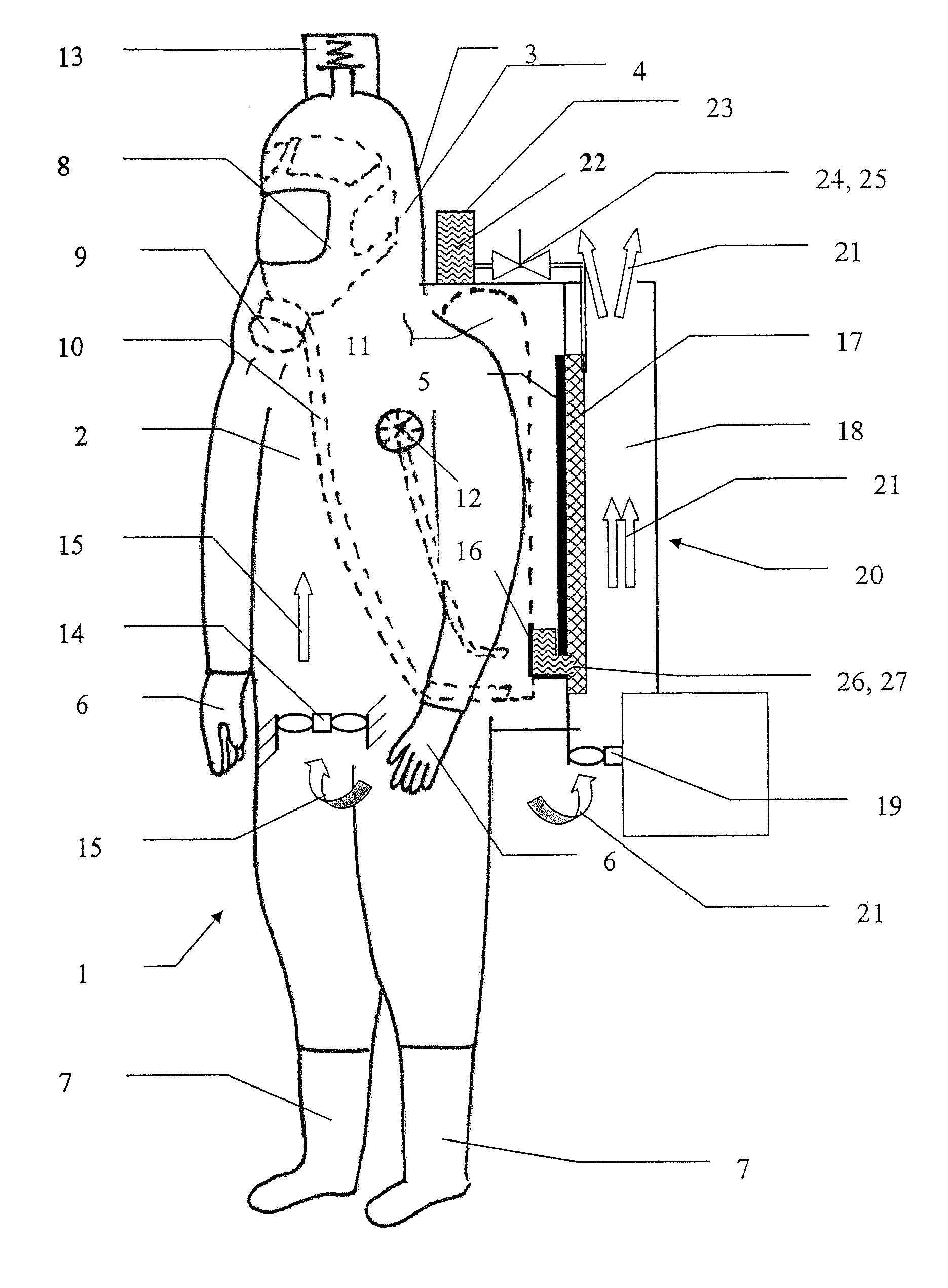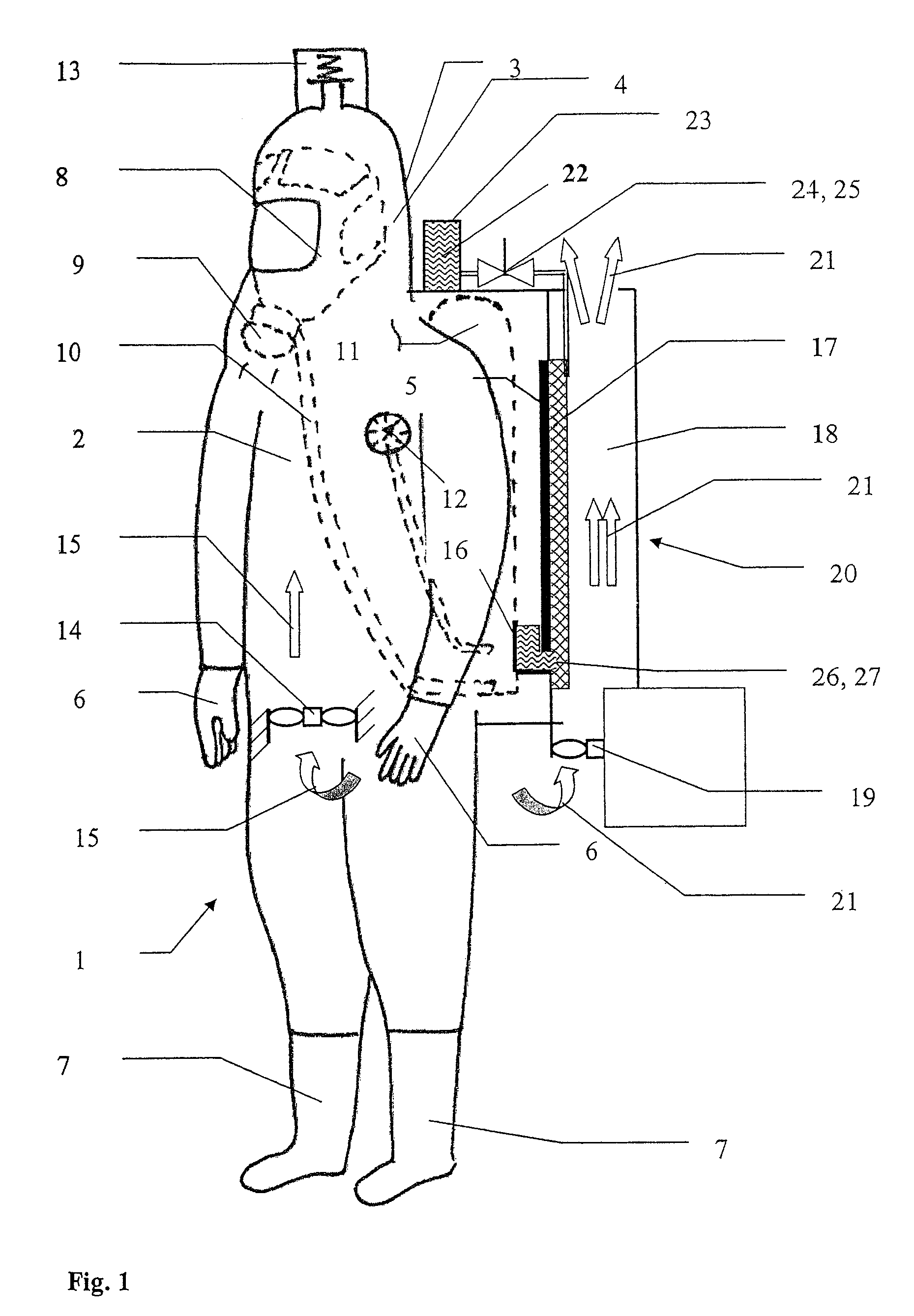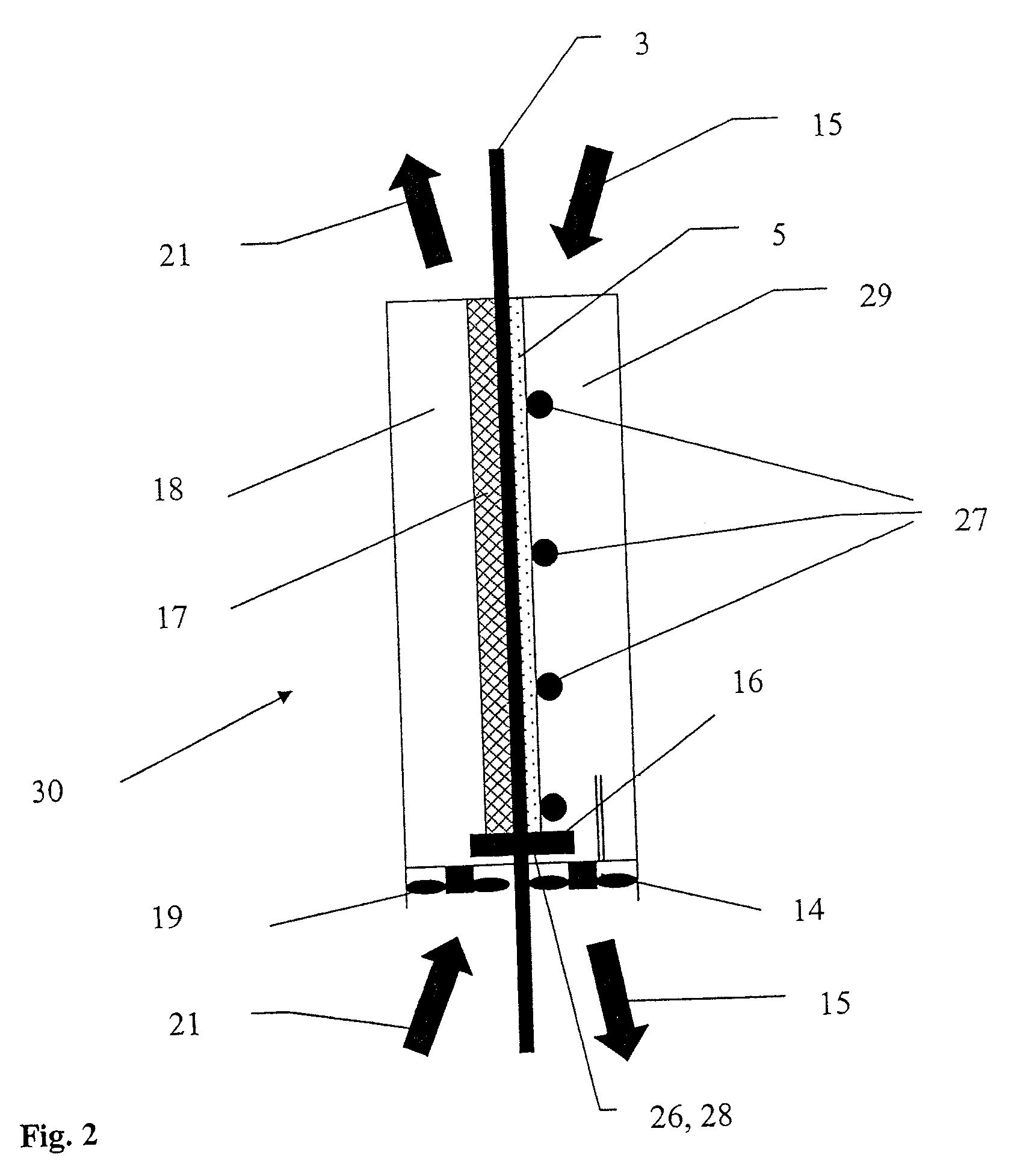Safety suit
a safety suit and suit body technology, applied in the field of safety suits, can solve the problems of inability to prevent moisture accumulation in the interior space of the suit, the weight of the suit to be carried along by the user, and the inability to release the body heat of the person, etc., to achieve the effect of improving the safety suit and reducing the weight of the sui
- Summary
- Abstract
- Description
- Claims
- Application Information
AI Technical Summary
Benefits of technology
Problems solved by technology
Method used
Image
Examples
Embodiment Construction
[0024]Referring to the drawings in particular, FIG. 1 schematically shows a safety suit 1, which completely surrounds a user 2 of the suit. The safety suit 1 comprises a safety suit jacket 3, which encloses an interior space 4 with a heat exchanger surface 5 on the rear side of the suit and with attached gloves 6 at the hands and boots 7 at the feet of the user 2 of the suit. The user 2 of the suit receives the breathing air via a full mask 8 with a full mask 8 with a demand valve 9, a pressurized gas tube 10 and a pressurized gas container 11, which is fastened to the back. The current gas pressure of the pressurized gas container 11 is displayed via a pressure gage 12. The gas breathed out by the user 2 of the suit escapes into the interior space 4 and is released into the environment via a pressure relief valve 13.
[0025]A first blower 14 for circulating the air of the interior space is arranged in the interior space 4 of the safety suit jacket 3, the air of the interior space bei...
PUM
 Login to View More
Login to View More Abstract
Description
Claims
Application Information
 Login to View More
Login to View More - R&D
- Intellectual Property
- Life Sciences
- Materials
- Tech Scout
- Unparalleled Data Quality
- Higher Quality Content
- 60% Fewer Hallucinations
Browse by: Latest US Patents, China's latest patents, Technical Efficacy Thesaurus, Application Domain, Technology Topic, Popular Technical Reports.
© 2025 PatSnap. All rights reserved.Legal|Privacy policy|Modern Slavery Act Transparency Statement|Sitemap|About US| Contact US: help@patsnap.com



